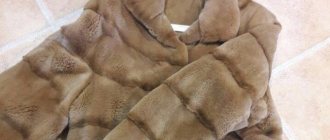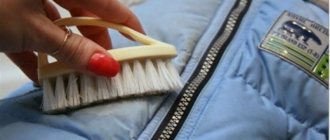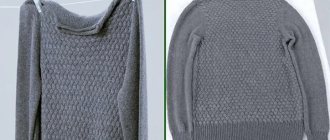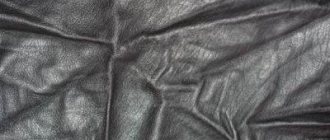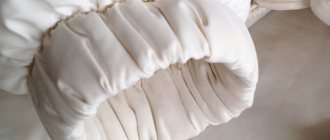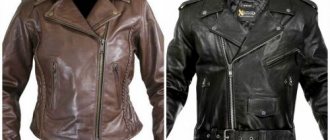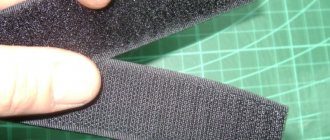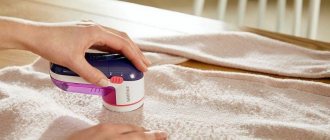How to clean raccoon fur on a hood?
Method 2. Alcohol and salt
- 1 teaspoon of alcohol is mixed with 3 teaspoons of salt.
- The mixture is filled with 0.5 liters of water.
- After this, you need to moisten a cotton swab in the resulting liquid and treat the contaminated fur with it.
- Rinse off any remaining product with clean water.
- Leave the product to dry naturally.
Oct 23
2022 Interesting materials:
What does gainer do? Gainer what is it? Optimum nutrition serious mass gainer how to take? How to take gainers correctly? How to take gainers? How to replant hibiscus? How to root hibiscus? The chief accountant is the manager of what level? Glucosamine Chondroitin Ultimate Nutrition how to take? What can't you eat on a gluten-free diet?
Faux fur after long-term storage
There are many myths about faux fur. Some say that it is warmer than natural one, that it does not lose its warming properties even when thoroughly wet. We can say with certainty: artificial edges are more durable. In addition, it costs several times less, which makes it a worthy alternative to natural fur both in price and aesthetics. However, very often owners of faux fur are interested in how to fluff up the faux fur on the hood. After all, after long-term storage in the summer, the villi often become wrinkled, twisted, and stick out in all directions like sloppy “needles.”
Faux fur is a worthy alternative to natural fur both in price and aesthetics
To straighten the fur, it is better to hang the item on hangers and just let it hang for several days. Sometimes this takes weeks. If the fur has not recovered, it can be treated with steam and then combed. In difficult cases, the edge should be wiped with a soft damp sponge, combed in the direction of the pile and left to dry. When it dries, the fur should be combed again. It is better to choose metal combs with long, blunt teeth.
Methods for cleaning faux fur
But many problems with fur can be avoided if you take its storage seriously, adhering to basic, fairly well-known rules. And then you may not need information on how to fluff up faux fur.
What exactly spoils a fur coat?
Even such a beautiful thing can turn into unkempt. And the reason for this is improper care. There are also other reasons that influence this. But it’s up to you to decide whether to let your fur coat reach an unsightly state. Below are the main examples of what exactly affects fur.
- Such phenomena occur if you are caught in rain or sleet. It is advisable not to wear a fur coat in this weather. When wet, the fur does not lay down correctly.
- It is undesirable for perfume or hair care products to come into contact with a fur product.
- The constant habit of wearing a bag with a wide handle on the sleeve or shoulder. This causes the fur to rub and not fit as you would like.
Bring back the beauty of your favorite thing
It is quite easy to cope with the situation if the villi have simply settled down a little over a long period of storage, having lost their former fluffiness. The housewife should hang the product on hangers in the open air and let it air for several days. Periodically, the fur needs to be straightened, stroked against the pile, using a comb with metal teeth. If frosts have begun, the first snow has appeared, you should take your favorite thing out into the yard and gently rub it, trying to fluff up the fur.
In a more complex situation, when the fur cannot be fluffed beautifully even after the efforts made, it is worth using the most popular methods:
- Give the product for dry cleaning, but only to an establishment that has been repeatedly tested for the quality of its services. Many similar companies offer this service and do a good job of fulfilling their obligations.
- At home, remember the resuscitating effect of steam. It is enough to fill the bath with very hot water, and firmly fix the fur coat over the container so that it “steams” well. The doors close and the product remains in this position for some time. After the procedure, the fur coat is shaken and hung out to dry further in the cold. It’s good if you can arrange a slight draft in the room. Brushing in the direction of hair growth will help to completely fluff up the fur.
- Fluff it by laying the product on a horizontal plane so that the fur coat is with the fur facing out. After moistening a clean sponge in water and squeezing it out, move along the hair growth line, as in the video. The slightly moistened pile is combed with gentle movements, the fur coat is vigorously shaken and hung out for further drying.
All three methods guarantee that the fur will definitely fluff up well, and your favorite thing will delight you with beauty again.
Care is a delicate matter
In the process of resuscitating a fur coat, you should not show fanaticism, forgetting that the main goal of the procedure is only to fluff up the fur and eliminate possible bruises. When dealing with the appearance of a product, you absolutely cannot:
- If you allow too much moisture, the inner layer will become hard, and it will be almost impossible to return your outerwear to its normal state.
- Hanging a fur coat in a bright light for the period of resuscitation - dark-colored fur will begin to fade, and light-colored fur will acquire an unpleasant yellowish tint.
- Use chemical sprays with a drying effect - the villi will break, the fur will begin to shed, and the smell of the product will be so reliably absorbed that it will take a very long time to ventilate it or walk in a cloud of the aroma of the cleaning product.
Like any expensive item, a mink coat needs especially careful care. It is not too complicated and therefore, by adhering to basic rules, you will be able to preserve its unusual beauty for a long time.
A frequently asked question is how to fluff up fur that has already lost much of its original appearance - the topic of our article today.
Fur on the hood has always made outerwear (jacket, down jacket, coat) more elegant, beautiful, and respectable. Among other things, such finishing always provides additional warmth in the winter cold: an impressive edge with long pile even allows you not to wear a hat, reliably protecting your ears and head from the wind and sub-zero temperatures. However, some people prefer to buy clothes without trim, thinking that keeping the fur on it in its original form from season to season will be too difficult.
The fur on the hood of a jacket often cakes after winter.
In fact, this is just a myth: fur - both natural and artificial - can be put in order, and without even going to the dry cleaner, but at home. It’s just that in some situations you will need to put in a little more effort and spend a little more time.
So how can you fluff up fur that has found itself in various unpleasant situations, save it from dirt, creases, tangles, bruises, and return it to its original spectacular appearance? Of course, there are many ways.
Important!
However, many situations can be prevented if clothing is stored and handled correctly. We'll talk about this too.
It is very important to store clothes correctly and handle them correctly
Wrinkled natural (as well as, in fact, artificial) fur with creases is a fairly common problem. It can get into this state for several reasons:
- long-term off-season storage;
- postal forwarding;
- wash;
- rain or snowfall.
Wrinkled natural (as well as, in fact, artificial) fur with creases is a fairly common problem
To answer the question of how to fluff up the fur on a hood, approaching the problem in general, you can do this: let it hang or dry naturally, and then gently (!) comb it without any effort. And this should be done with a slicker comb, which can be purchased at pet stores. Some craftsmen who work with this material use a special tool made from long... sewing needles. The effect of its use is truly impressive, but, unfortunately, it is impossible to find something similar on sale.
A slicker comb will effectively comb and fluff up a fur item.
In difficult cases, steam can be used. To do this, just hold the edge over a boiling saucepan, a bath of hot water, or use an iron with a vertical steam function. But under no circumstances get it wet!
When trying to figure out how to fluff the fur of an arctic fox, for example, you should remember: natural fur perfectly withstands critical negative temperatures, but high temperatures - not so much. Therefore, never dry natural edging on a radiator or with a hairdryer, and when using steam, keep the product at a distance of at least fifty centimeters from water.
The Arctic fox, raccoon, and silver fox also do not tolerate salt and other chemicals well. In this situation, when you come from the street, you should not immediately rush to comb your hood. Just let it dry well away from the batteries. In this case, the pile should not come into contact with anything.
If you are interested in how to fluff up arctic fox fur with particles of salt and other dirt at home, do not try to immediately remove them from the wet pile. This can lead to simple ripping out of the lint. Let the dirt and salt dry, then you can easily comb your hood.
The fur on the hood should only be combed after it is completely dry.
Very often, ladies, having already put on a jacket or down jacket, add the final touches to their image, namely, spray varnish, use perfume, and other perfumes. When it gets on the fur, it almost instantly glues the fibers together. Later, serious tangles and lumps form in this place, and the owner urgently “rushes” online, to forums with a cry for help, asking to be told how to fluff up the fur on her favorite jacket.
Attention!
Never wear perfume while getting dressed.
And if the villi are stuck together due to varnish or perfume, try using alcohol: wet the resulting lump, carefully separate the villi with your fingers and comb, but only in the direction of their natural slope. You can also use alcohol to get rid of lumps and tangles formed for other reasons. In this case, you need to act without using force, carefully, without rushing. It is also worth noting that all of the above also applies to caring for faux fur.
You can fluff up and renew the fur using special products, which are often alcohol-based.
Smoothing with a brush
A high-quality brush is a mandatory attribute for the owner of fur models made from mink, arctic fox, fox, mouton, and nutria.
The mink accessory is made from:
- metal;
- wood;
- plastics.
The coat is treated with similar brushes, visually transforming the condition of the fur and making it smooth, shiny, and fluffy. The main parameter for choosing an accessory is softness.
Step-by-step instruction:
- Use a damp, colorless foam sponge to dampen the outfit.
- Brush it with a soft brush.
- Leave in a ventilated area.
Using a steamer
Bruised fur is restored from exposure to steam. The steaming procedure is carried out according to the following algorithm:
- Select a hanger by size.
- The item must be clean. The presence of dirty stains is removed with a soft brush so that it does not stick.
- Fill the steamer with clean filtered water.
- Test the device by releasing a stream of steam to the side. A uniform string should fall on the fur coat without splashing.
- To prepare, hold the equipment at a distance of 20-25 cm from the item, direction along the pile. This will prevent the fur from burning. Duration 3-5 minutes.
- The main procedure is carried out from a distance of 15 cm and lasts 20 minutes. Process the entire coat from the collar, hood and sleeves to the front and back.
- Shake your favorite and place on hangers to dry.
While drying, do not turn on heaters, hair dryers, or radiators nearby.
